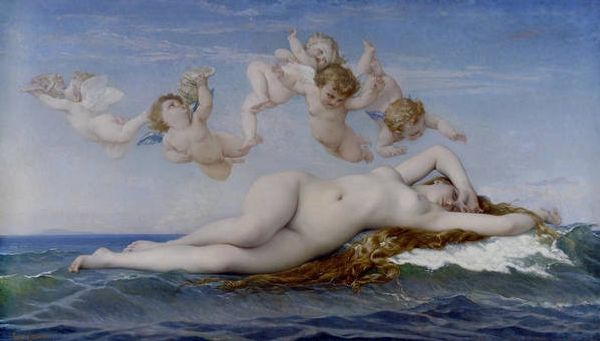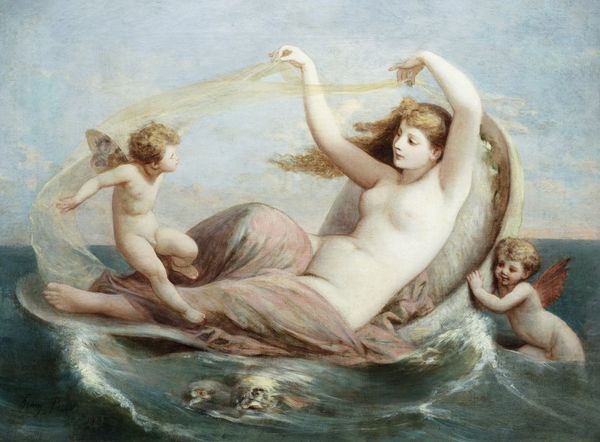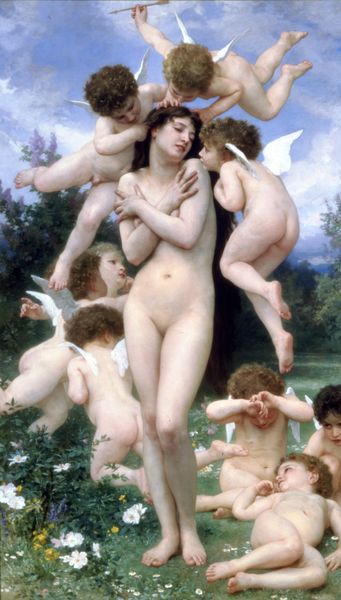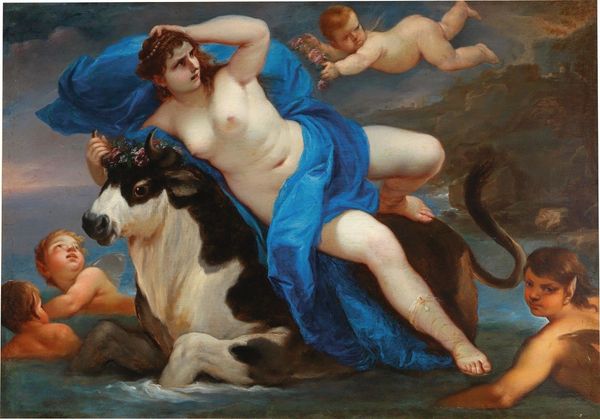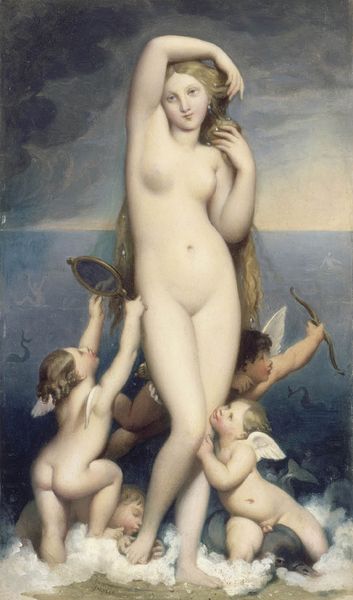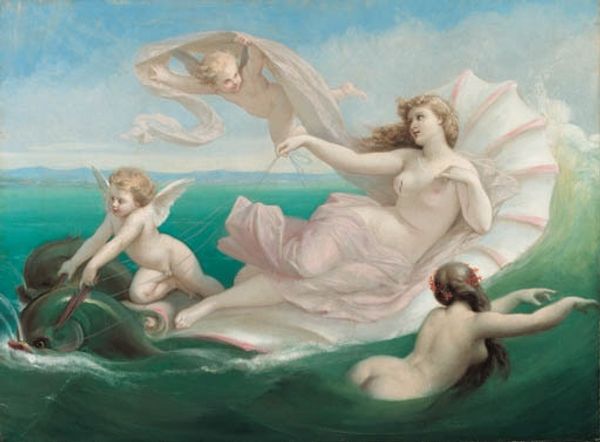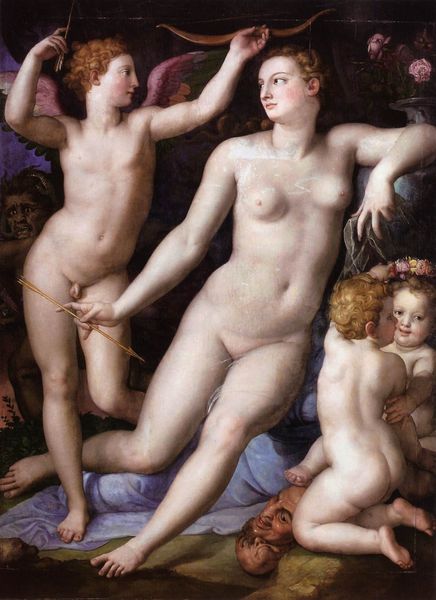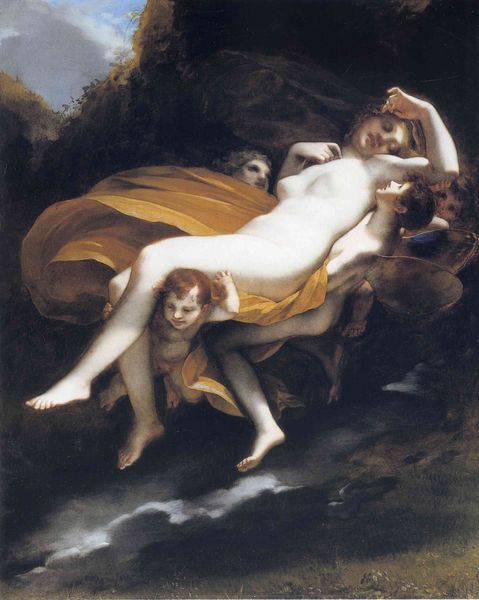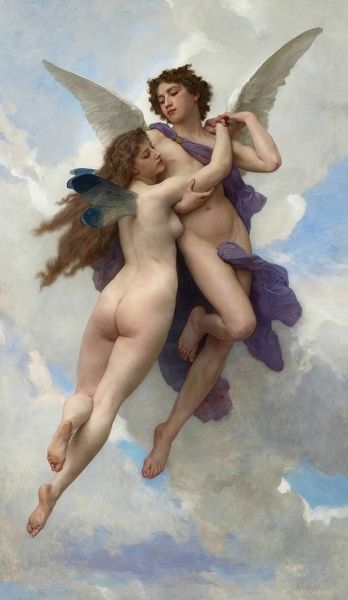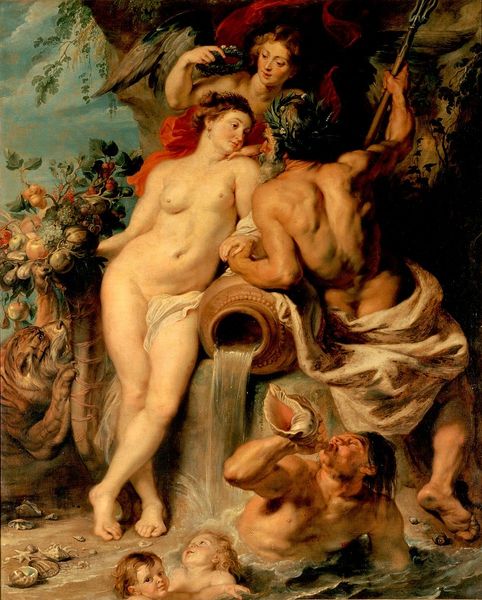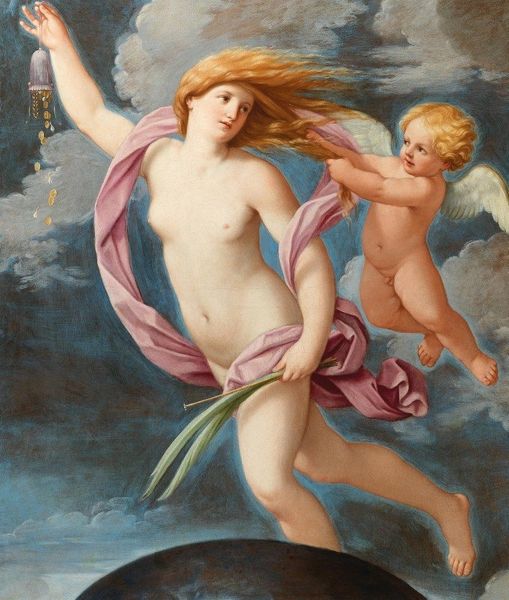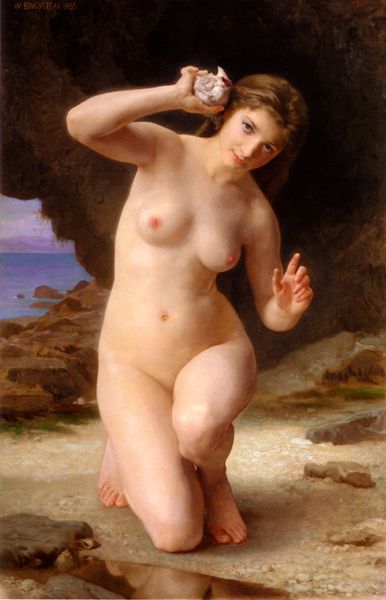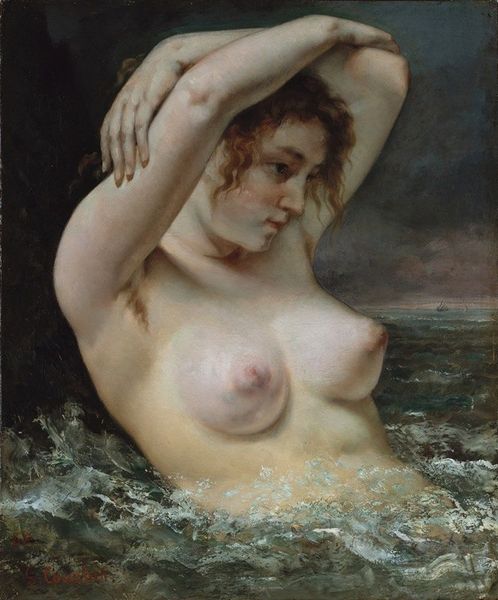
#
impressionistic
#
acrylic
#
abstract painting
#
possibly oil pastel
#
neo expressionist
#
acrylic on canvas
#
underpainting
#
paint stroke
#
mythology
#
painting painterly
#
watercolor
Copyright: Public Domain: Artvee
Curator: Alexandre Cabanel's *The Birth of Venus*, painted in 1875, captures a classical subject with undeniable sensuality. What's your immediate impression? Editor: It's intensely…sweet. Almost saccharine. The scene feels very staged, idealized, but executed with an incredible lightness. Those cherubs practically dissolve into the sky! Curator: Exactly. Cabanel was a master of academic painting, and this piece epitomizes his polished style. Think about the role of the Salon in shaping artistic careers. He was championed there, becoming a professor at the École des Beaux-Arts. Paintings like this affirmed specific notions of beauty and power in the Second Empire. Editor: So, the "birth" of Venus…a very deliberate performance of femininity meant to appeal to the establishment, not necessarily challenge it. There's a clear male gaze at play. The artist uses soft, flowing lines, creating an almost dreamlike effect. You almost don’t see the somewhat turbulent water that is supposedly supporting her…! She's utterly passive, seemingly enjoying her grand entrance. The little cupids circling her, like buzzing admirers… Curator: The painting caused a sensation. Some found it indecent, others praised its beauty, its embodiment of classical ideals. Cabanel adeptly walks the line between eroticism and decorum, ensuring its acceptance within the bourgeois culture of the time. He actually competed against Manet's *Olympia* in the Salon…two very different approaches to depicting the female nude. Editor: It's the lack of defiance, perhaps even a naive vulnerability, that sets it apart from *Olympia*. Where Manet confronts you, Cabanel invites you to admire. And the almost flawless skin tone – that takes hours, maybe even days. She emerges from the sea as perfect and as untainted, but her "birth" serves a definite social purpose. The artwork certainly encourages a certain attitude to love and to the nature of a woman. It tells a story that promotes a society where women should embody beauty but at the cost of their own personhood. Curator: It certainly provides a compelling lens through which to examine shifting attitudes toward art and social values during the later half of the 19th century, while considering what an Academy is capable of fostering when left unchecked. Editor: Well said. All that is left to wonder, after examining this fascinating artwork, is what truly blossoms forth after this momentous "birth".
Comments
No comments
Be the first to comment and join the conversation on the ultimate creative platform.
